Without Our Legs To Stand On
Posted on December 17, 2018How much power lies in storytelling and how much lies in silence? If I name things what will you do with my words, things which cannot be agreed upon though we act as though there is agreement.
Language is the trickiest thing of all.
I’m lying. The trickiest thing is being.
I’m lying. The thing is being.
The trickiest thing is not the moments that you bump up against something, a person, a chair, an idea, a feeling. The trickiest moments are all the other ones, when you float without contact. The moments when the complexity can be denied or abstracted or speciously postponed.
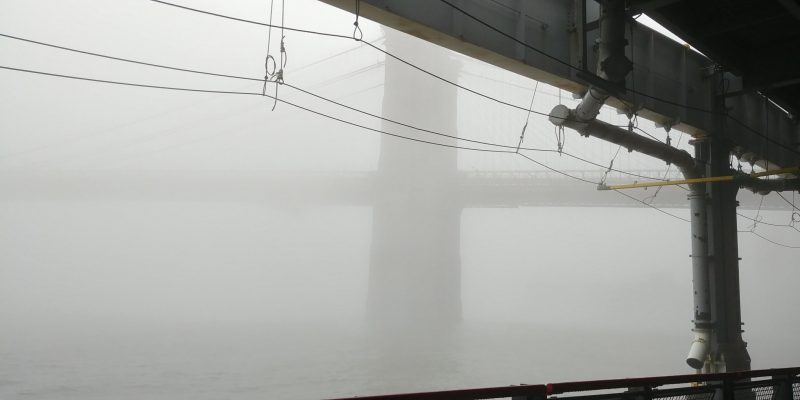
Difficult to discern. Photo: A. Hansen
The trickiest moments are the ones in which you get to believe in your non-participation. Or maybe the trickiest moments are simply the ones of belief without doubt, and doubt without resource.
*
Why is the designer’s body elided from design education?
*
The body is the dirty truth of existence, the thing that can’t quite be managed and so is left out of polite company, of serious discourse. The leaky, sagging, dying system that motors us through the world. But the body is also everything that each of us is. The beating, breathing aggregate of our timespan. The place where knowing and not knowing unfold, where reason and emotion and need marry and form the materials for action and interaction. Bodying is where the thrilling is, not just the dying.
I often feel like the body is treated like a problem to be solved for, rather than accepted as a defining factor and partnered as an asset. There are indications that design wants to take this turn, but unless the body, the soma, both academic and experiential, are centered in design education, how will this happen?
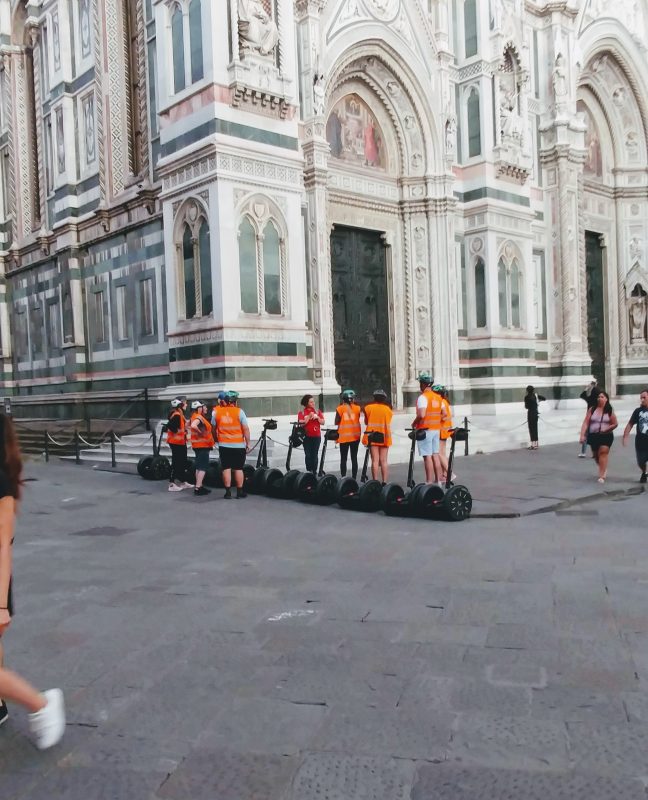
Designing away the body. Seqways in Florence. Photo: A. Hansen
If “to know thyself is the beginning of wisdom,”1 what do we know of this sum of systems that defines us? Designers are expected to join together in some rudimentary but common understanding of ethnography, of research tools, and design methods; to have at least cursory familiarity with software and presentation formats. But we share no agreements about the body, we do not join in physical practice or conversation. Why not?
Systems thinkers are expected to know the world through systems, but I question a lack of emphasis upon understanding the material and experiential reciprocity of our engagement within those systems. How can the designer parse the world if they aren’t also engaged in combing their own sense-making apparatus?
*
The issues of the Anthropocene rise, in part, from human abandonment of self. We’ve created elaborate systems and technologies that have afforded humans a great deal of benefit, but which sometimes seem to me to be about flight from the body’s animal reality, its ‘limitations.’
The body can only be in one place at one time, and our bodies are a place we cannot choose not to be. Yet we spend enormous amounts of time and resource trying to negate this. We devise ever more sophisticated technology to allow us to interact beyond the limitations of space. Virtual reality is quickly advancing to allow for destabilizing experiences of place and personhood – some for entertainment, some designed in pursuit of therapeutic outcomes. My point is only that we devote tremendous resource to solving by mediation, through thing-ifiyng, through placing the center somewhere beyond our skins.
Of course, there is no ‘Body,’ just many bodies. In the US, bodies are funny things, reserved, from a certain ideological vantage point, for things beyond labor. The body is territorialized as a domain for pleasure, affluence, status, vanity. Here, we are sold ourselves in perfume advertisements, watches, gym memberships, and pharmaceutical ads. Conversely and without recognition, the body is also the territory of threat and precarity. Bodies of color, of gender, of class experience lack of access to the forgetting serum of capitalist promise and are forced into the gap between what is and the theatrical promise. It’s role as metabolizer and vehicle of maturation (age and experience), as mind-matter and emotional lighting rod, as ultimate boundary are fought not partnered.
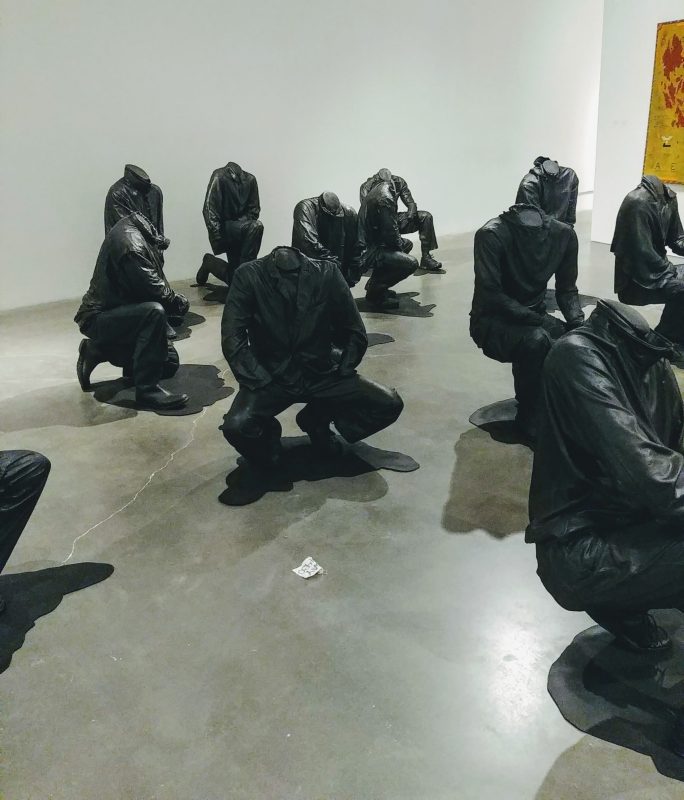
Senzenina by Haroon Gunn-Salie. Photo: A. Hansen
And now designers, despite our obvious cultural discomfort, are called upon to consider what it would mean to extend ethnographic and design practices ethically towards other forms of life. We have human centered design and we feel the mandate to design for non-human wellbeing.

Cat body, cat place. Photo: A. Hansen
I can learn about a lake or a forest or a cat, but the thing we have in common, as far as I can tell, is that we are bodies. An ethnographic understanding of a tree, inherently slanted, will be incomplete if I am incapable or unwilling to place my thinking tissues in the field. It will be even less stable if I do not have facility with my own sensory apparatus and some critical ability to both access and assess my own physical presence as a researcher. Technology cannot obviate this problem, though it has done much to obfuscate it. Research mediated by technology doesn’t allow for complex flows of understanding – or maybe, more importantly, it doesn’t allow for a truly situated understanding of information delivered via technology.
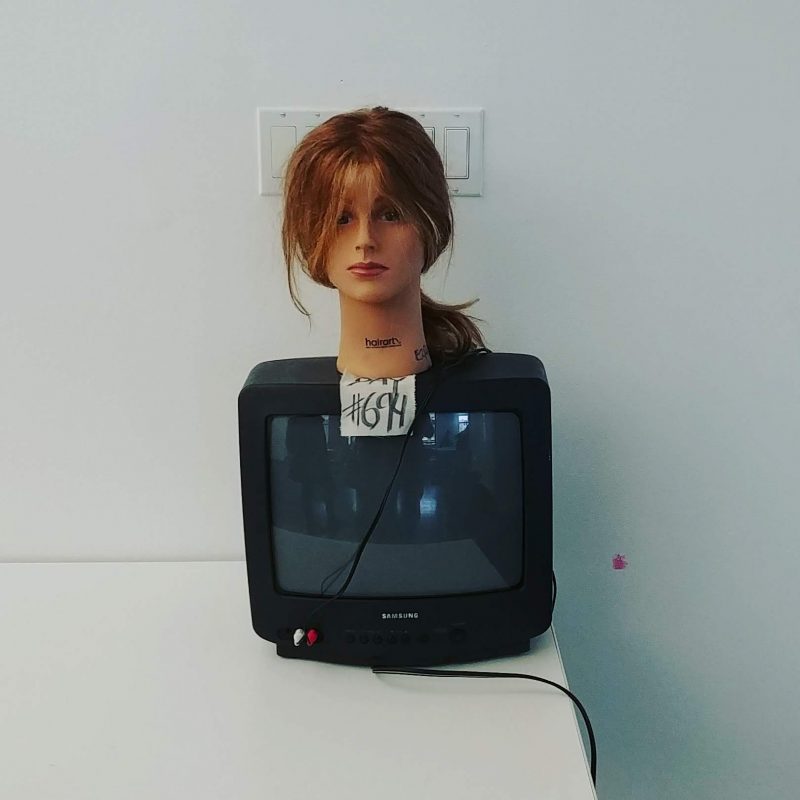
An incomplete toolkit for sensory ethnography. Photo: A. Hansen
For example, imagine you are watching a video of a tree in a field, its leaves fluttering in a soft wind. What did your imagination conjure? This image has little import if you’ve never experienced an analogous event. Video is devoid of temperature, of weight, of tactility. It plays upon our stored experience and capacity for association and meaning making. Video is the static result of another body’s choice, not subject to the constant framing of experience that would occur if your actual body were situated near a tree in a field. It is sanitized. But because it is mediated through technology it is privileged, its lack of dynamic seen as an asset and sign of trustworthiness.
If you were there, in that field, how would you move your gaze and why? Would you change the position of your body, perhaps to seek shade or to examine something shiny – a beetle! – crawling at the base of the tree? If you wanted to know something about that tree, would you lean against it? Scrape your cheek against its bark? Position yourself, head nestled at its roots, eyes up, and notice a nest, a squirrel, a community? Would you suddenly wonder what tree “gaze” might be and what it serves? What is seeing for a tree? What is community? What is home?
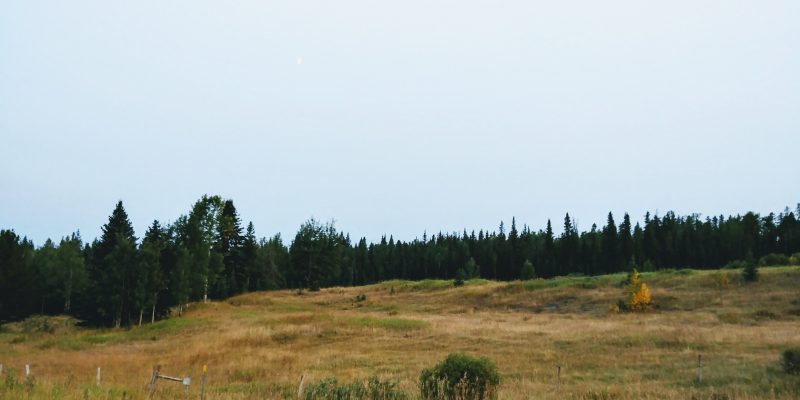
Rural Canadian tree community. Photo: A. Hansen
Would any of those questions come about if you were not in the place, with the grass, with the realities of the day, and with access to your sensory, your aesthetic curiosity? Empathy is a design buzzword, but it’s really a function of associated embodiment (another buzzword). Embodiment is non-optional and I’d be tempted to ban the word if it weren’t so useful to help describe a culturally encouraged dissociation. But facility with the senses can be cultivated through somatic practice. The senses have expressive and interrogatory capacity, the nuance of which can be accessed through repeated structured visitation.
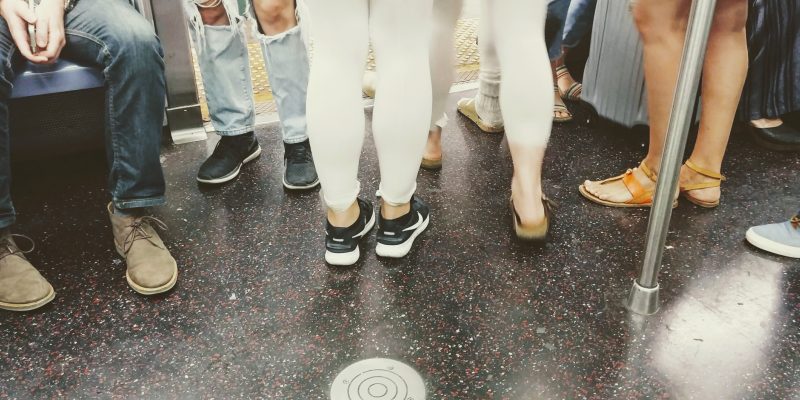
Differently accessed – differently practiced bodies: pedestrians and ballerinas. Photo: A. Hansen
So why is aesthetic capacity not explicitly cultivated in the designer? In the toolkit, and in the education, where is the designer’s body? What might the physical education/preparation of a designer look like and how might a design practice situated in physicality operate? Such educational practices could be easily and ethically developed in collaboration with expert creative somatic practitioners. Physical practices afford opportunities for situated, invested systems thinking. Thinking of this kind seems critical to becoming an effective and ethical design practitioner in our unwell world.
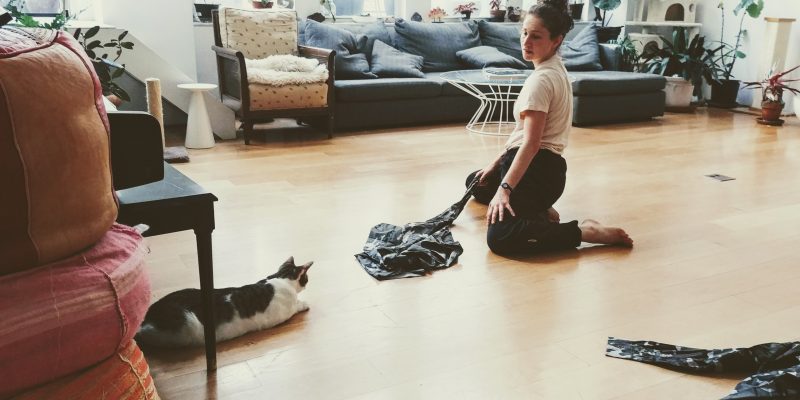
Cat and dancer negotiating leadership during feline initiated collaboration. Photo: A. Hansen
-AH
Bibliography
- Socrates, common attribution
- Natural Capitalism, by Paul Hawken, Amory Lovins, and L. Hunter Lovins, Back Bay Books, NYC, 1999.
- Ethnography of Life Forms, by John Hartigan, Aes Engagement Blog, September 8, 2015.
- How Forests Think: Toward an Anthropology beyond the Human, by Eduardo Kohn, University of California Press, Berkeley and Los Angeles, California, 2013.
- Taking Root To Fly: Articles on Functional Anatomy, by Irene Dowd, NYC, 1991.
- A Choreographic Mind: Autobodygraphical Writings, by Susan Rethorst, University of the Arts Helsinki, 2015.